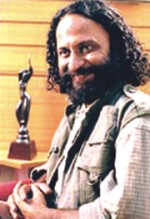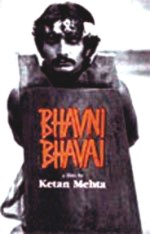|
Film

Susanna Tjokro
The Jakarta Post
 |
Kurasawa at work. |
Asian cinema is colourful and rich in diversity; many movies are made with local cultural imprints while others are influenced by Western culture.
India is among the Asian countries where the film industry is expanding not only quantitatively but also in terms of quality and its film industry is often nicknamed "a melding of Hollywood and Bombay".
"'Bollywood' is a derogatory term. The moment you call it is as if our film industry does not have an independent identity," says Indian director/producer/ screenwriter Ketan Mehta.
"Bollywood is actually Hindi language-based cinema, a term given to Hindi films that are made in Mumbai, formerly known as Bombay," Mehta says.
Mehta has won numerous awards, including a UnescoClub Award for Best Film on Human Rights for the film Bhavni Bhavni and Best Film at The Hawaii Film Festival for Mirch Masala.
 |
Ketan Mehta, director/producer/
screen writer. |
"The term 'Bollywood' is sometimes applied to the Indian film industry as a whole, but in fact, there are 14 different languages in India, such as Hindi and Marathi, and there are five or six major centres of filmmaking; each is distinctively different to Bollywood. Bollywood means songs, dances, extravaganza and unbelievable romances. I am not a Bollywood filmmaker," says Mehta, who hopes that people do not attach any particular stereotype to Indian cinema - the other Asian film industries, say Filipino or Chinese, do not have such terms. The term 'Bollywood', that is usually synonymous with extravagance, is unsuitable for many Indian flicks, such as Dombivli Fast (in Marathi language) - you will not find any glamorous song-and-dance scenes in the movie. Instead, the film tells a tragic story of a depressed middle-aged bank employee who travels by Dombivli Fast (the name of a local train) every day.
"It's a dark film," says Mehta. Dombivli Fast has won several awards, including the Grand Jury Prize: Best Feature Film at the Indian Film Festival of Los Angeles and Best Director as well as Best Producer at the Asian Festival of First Films (Singapore).
Maintaining cultural identity
"We knew that India produced more films than Hollywood. Today, you can watch Indian films in Asia, the Middle East, Europe and South Africa," says Mehta, also the chairman of Maya Movies Private Limited, a film production house based in India.
Mehta says that after a decline of 20 years, the Indian film industry is growing and part of the reason is because of the economic boom that caused the growth of multiplexes in India.
According to the Financial Times, theater operators are building 10 to 15 multiplexes a month, each of which has four to five screens.
By 2010, India will have more than 2,000 multiplex screens, five times the number it had last year. India produces more than 1,000 films a year.
The fact that India is the second-most populous country after China also has played a role in the growth of its film industry.
The estimated population in India is about 1.3 billion. "Hollywood has been trying to capture our domestic market, but we have a strong domestic market as Indians still enjoy watching movies from their homeland," says Mehta, a fan of Charlie Chaplin, Jacky Chan and Shah Rukh Khan.
Volker Langhoff, German cinematographer-cum-director, holds a Masters degree in cinematography from the HFF-Babelsberg, Germany, and a Masters degree in filmmaking from California Institute of the Arts.
He was awarded a scholarship with the Academy of Motion Picture Arts and Sciences, the award-giving body responsible for the Oscars.
The late Akira Kurosawa, an internationally acclaimed Japanese director, is his favourite Asian director.
However, Langhoff thinks there is a lot of violence in Japanese films these days.
 His favourite Japanese film (apart from Kurosawa movies) is the nonviolent (and not so famous) Happy Go Lucky, a story about five fourth-grader students who want to succeed in doing a back somersault over a horizontal bar in gym class in just one week. "The film is beautiful and quiet," says Langhoff. His favourite Japanese film (apart from Kurosawa movies) is the nonviolent (and not so famous) Happy Go Lucky, a story about five fourth-grader students who want to succeed in doing a back somersault over a horizontal bar in gym class in just one week. "The film is beautiful and quiet," says Langhoff.
Last year, Langhoff taught at the International Academy of Film and Television in Cebu, Philippines. He asked his students not to try to copy Hollywood.
"I'm sorry to say, but you don't have the skills - you cannot just pour money into something without the skills. Other than that, you don't work for a very wealthy country. Hollywood spends lots of money in making its films," says Langhoff. He will give the same advice to any film students in other Asian countries.
 In his opinion, the Korean film industry is growing, not only in terms of quantity, but also in quality. "Filipino movies are technically not as good as Korean films; however, movies from the Philippines come with fresh ideas and I think they have the potential to be as good as Korean films in the future," says Langhoff. In his opinion, the Korean film industry is growing, not only in terms of quantity, but also in quality. "Filipino movies are technically not as good as Korean films; however, movies from the Philippines come with fresh ideas and I think they have the potential to be as good as Korean films in the future," says Langhoff.
In Langhoff's opinion, people should watch films from a variety of countries as it can help them learn about other cultures.
Other than that, people who study overseas should return to their homeland and implement their knowledge and skills to improve the film industry in their own country.
He also gave a piece of advice not to copy films from other countries and Hollywood - one should make movies with one's own cultural imprint, he said.
© ANN;Reprinted with permission
Copyright
(R) thedailystar.net 2007 |
